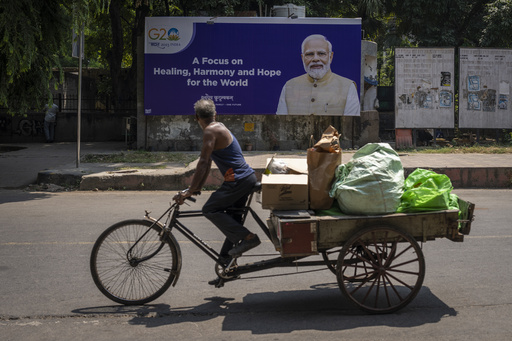
BENGALURU, India — Over the past four years, the Indian government has been advocating for a program aimed at encouraging citizens to adopt more environmentally-friendly lifestyle choices, such as cycling instead of driving and reducing plastic use.
However, during the recent annual budget announcement, this once-prominent initiative was conspicuously absent, with no mention of future funding.
The initiative, known as the Lifestyle for Environment Initiative, or Mission Life, was previously a key focus for Prime Minister Narendra Modi and his cabinet, highlighting its importance in achieving the nation’s climate goals. The aim was to engage the population in efforts to reduce emissions, such as by lowering electricity consumption and foregoing unnecessary car trips. Unfortunately, interest in Mission Life has waned; its dedicated government website has not provided any updates since March 2024.
Experts believe that the challenges of fostering widespread behavioral changes in daily life, especially when financial incentives are lacking, are more significant than anticipated. Nevertheless, the insights gained from the initiative could be valuable in framing future policies designed to effectively encourage a substantial portion of the population to abandon their high-emission habits.
Latha Girish, a business owner in Bengaluru specializing in plastic packaging, shared her perspective on the challenges that many small business owners face. She emphasized that her focus is on keeping her business afloat rather than addressing its emissions. “Many in our field are unaware of Mission Life or similar initiatives,” she noted, pointing out that the additional costs tied to transitioning to sustainable materials could drive customers away in favor of cheaper alternatives.
In contrast, Sunil Mysore, the CEO of a sustainability solutions company, believes that positive environmental changes are attainable when there is motivation for a “better life.” He shared that his home is now completely self-sufficient, producing energy from waste and cultivating vegetables in a rooftop garden, while also harvesting rainwater to mitigate water shortages in Bengaluru.
Prasad Gawade, who operates an ecotourism venture that connects travelers with Indigenous communities, echoed similar sentiments. He explained that his commitment to environmental sustainability stems from personal initiative rather than government backing, as small businesses often lack the incentives afforded to their larger counterparts.
Sanjib Pohit, a senior fellow at the National Council for Applied Economic Research in New Delhi, pointed out a shortcoming of Mission Life: it did not incorporate significant infrastructure improvements necessary for altering public behavior, such as making cities more accommodating for electric trams and trains rather than private cars.
Inquiries directed to India’s environment ministry regarding the future of the Mission Life program went unanswered.
One alternative approach to reducing emissions could involve enhancing energy efficiency rather than altering lifestyle habits. Every electrical device or appliance—from refrigerators to light bulbs—holds the potential for improved energy efficiency. Experts suggest these efficiency measures represent an easily attainable goal for reducing carbon emissions at minimal additional cost.
Regrettably, the federal budget did not allocate new funds for energy conservation initiatives or the regulatory entities responsible for improving India’s energy systems.
For Girish, investing in efficiency improvements for her business would require significant upfront capital, which she cannot afford without governmental assistance.
According to data from the International Energy Agency, worldwide energy efficiency saw an increase of just over 1% in 2023, even as nations committed to doubling their efficiency by the decade’s end.
Jon Creyts, CEO of the RMI climate think tank, explained that implementing efficient systems maximizes the potential of existing infrastructures. “It’s about being economical and ultimately producing less,” he stated.
Scientists recognize the importance of addressing individual emissions, despite their seemingly small contribution to the global total of 41 billion tons of carbon pollution per year. The combined effort of individual actions alongside demands for accountability from major polluters is crucial.
“Changing behavior is undoubtedly challenging,” acknowledged Ramya Natarajan from the Center for Study of Science, Technology, and Policy. However, she validated that the awareness-driving goal of Mission Life could indeed yield positive outcomes. She described it as a progressive initiative encouraging widespread adoption of sustainable practices while fostering reflection on one’s choices.
For Mysore, the pursuit of sustainable living transcends mere emission reduction. “The joy of being sustainable is what drives me,” he asserted. “Though my efforts may not result in monumental emissions reductions, even the smallest actions can potentially ignite much larger change.”

